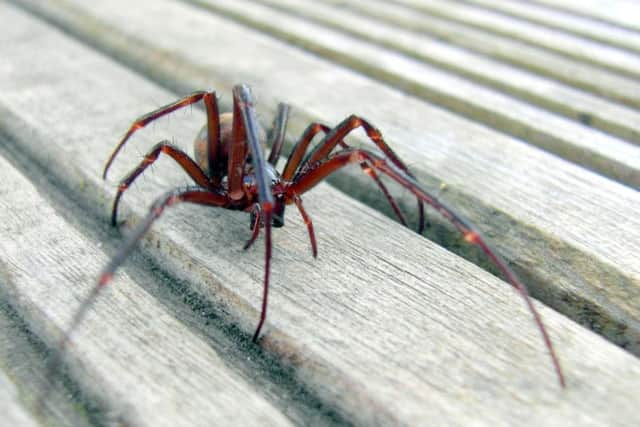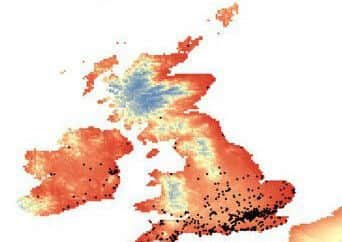Black widow spider relatives are spreading across Scotland
The species, known as the noble false widow, is originally from Madeira and the Canary Island but has been present in the south of England for a century.
Recently populations have become established in the north of England and as far afield as Orkney.
It has also been found in Aberdeen and South Lanarkshire.


Advertisement
Hide AdAdvertisement
Hide AdNow scientists are predicting the spiders will soon set up home in many other parts of the country as they continue a rapid northward march, assisted by hitchhiking on international travellers and imported plants.
They warn that this colonisation could pose a risk to vulnerable native wildlife – particularly bugs and insects but also potentially larger animals.
The most immediately threatened creatures would be other spiders, which would lose out to the invading aliens.
Despite measuring less than 2cm across, false widows will take down much bigger creatures.


They will prey on the large and fierce-looking stag beetle, which is endangered, and have even been witnessed dining on a common lizard measuring up to 15cm long.
Academics from the UK and Germany have created new maps forecasting how the species will spread.
The team used computer modelling to predict favourable habitats for future invasions, based on present occurrence patterns.
The UK is expected to become a hotspot, but the Mediterranean islands and parts of South America, South Africa, south-west Australia and New Zealand are also expected to see an influx of the spiders due to mild climatic conditions.
Advertisement
Hide AdAdvertisement
Hide Ad“These are areas that are home to a wide range of vulnerable native species, so the potential introduction of Steatoda nobilis, which can overcome prey much larger than its own size, is quite worrying,” said Professor Rainer Breitling, from the University of Manchester.
Increased sightings in the UK and Ireland have already sparked panic after false widows were discovered in large numbers in public spaces.
Infestations sparked the closure of several schools in east London last year.
People are advised to keep clear of the spiders, but the researchers are urging the public not to panic as a bite is comparable with the sting from a wasp or bee.
And though its bite is more toxic than that from any native British spider, there have been few confirmed cases and none of serious injury as a direct result.
“There is no need to be concerned,” Prof Breitling said.
“These are not typically house spiders and in most places where they are found live alongside people unnoticed.”
The biologist added: “Although its bite can be very painful, comparable to a severe bee or wasp sting, there are no confirmed cases of serious medical consequences from a noble false widow bite.”
The noble false widow – Steatoda nobilis – is one of three false widow species occurring in the UK.
Measuring up to 1.4cm across with a pea-sized body, it can be recognised by its shiny dark brown abdomen with white half-moon marking.